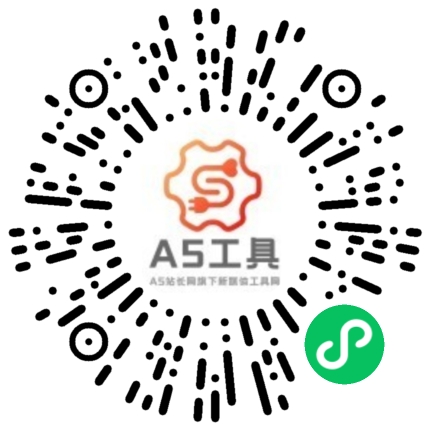动词语态解析视频 动词的时态与语态?
一、动词什么和语态变化?
动词是只动作和表情的意思,语太变化就是语言表达的能力
二、动词的时态与语态?
动词的时态和语态是语法中的两个重要概念。
时态(Tense):时态表示动作或状态发生的时间。常见的时态有以下几种:
现在时态(Present Tense):表示现在正在进行或经常发生的动作,如"I eat an apple"(我吃一个苹果)。
过去时态(Past Tense):表示过去发生的动作或状态,如"I ate an apple"(我吃了一个苹果)。
将来时态(Future Tense):表示将来要发生的动作或状态,如"I will eat an apple"(我将吃一个苹果)。
语态(Voice):语态表示动作的主体与受体之间的关系。常见的语态有以下几种:
主动语态(Active Voice):表示主语是动作的执行者,如"He eats an apple"(他吃一个苹果)。
被动语态(Passive Voice):表示主语是动作的承受者,如"The apple is eaten by him"(苹果被他吃了)。
需要注意的是,时态和语态可以同时存在,即动词可以同时表达时间和主动/被动关系。例如:"The book was written by the author"(这本书是作者写的),其中过去时态表示动作发生在过去,被动语态表示主语是动作的承受者。
时态和语态的正确使用可以帮助准确表达动作发生的时间和动作的执行者或承受者。
三、be +动词被动语态的用法?
be+动词被动语态,英语中其实是没有动词被动语态的说法的。应该是be+动词的过去分词表示被动语态。英语中有主动语态和被动语态,和汉语是一致的。比如汉语中:我看到他走进我的房间。也可以说:他被看到走进我的房间。英语的主动句和被动句分别是:I saw him go into my room. He was seen to go into my room.
四、动词变被动语态规则?
把主动语态改为被动语态非常简单,可以遵循以下几个步骤:
1. 先找出谓语动词;
2. 再找出谓语动词后的宾语;
3. 把宾语用作被动语态中的主语;
4. 注意人称、时态和数的变化。
例:1. Bruce writes a letter every week. →A letter is written by Bruce every week. 布鲁斯每星期写一封信。
2. Li Lei mended the broken bike this morning.→The broken bike was mended by Li Lei this morning. 李雷今天上午在修理坏的自行车。
3. He has written two novels so far.→Two novels have been written by him so far. 至今他已写了两部小说。
4. They will plant ten trees tomorrow.→Ten trees will be planted by them tomorrow. 他们明天将要种植十棵树。
5. Lucy is writing a letter now.→A letter is being written by Lucy now. 露西正在写信。
6. You must lock the door when you leave.→the door must be locked when you leave. 当你离开的时候你必须把门锁上。
五、情态动词被动语态例句?
We should plant many trees on the mountains.
我们应该在山上种许多树。
Many trees should be planted on the mountains.
应该在山上种许多树。
Teenagers should be allowed to go out with their friends.
应该允许青少年和朋友外出。
The children should be allowed to go to the movies with friends on Friday nights.
孩子们应当被允许星期五晚上和朋友们一起去看电影。
Tables can be made of stone.
桌子可由石头做成。
Waste paper should not be thrown here.
废纸不应该扔在这里。
Should it be done by Li Ming?
这件事应该是李明干吗?
够了吗???
六、没有被动语态的动词?
1)不及物动词或动词短语无被动语态:
appear,diedisappear,end(vi.结束),fail,happen,last,lie,remain,sit,spread,stand
breakout,cometrue,fallasleep,keepsilence,loseheart,takeplace.
Afterthefire,verylittleremainedofmyhouse.2)不能用于被动语态的及物动词或动词短语:
fit,have,hold,marry,own,wish,cost,notice,watchagreewith,arriveat/in,shakehandswith,succeedin,sufferfrom,happento,takepartin,walkinto,belongto3)系动词无被动语态:
appear,bebecome,fall,feel,get,grow,keep,look,remain,seem,smell,sound,stay,taste,turn4)带同源宾语的及物动词,反身代词,相互代词,不能用于被动语态:
七、哪些动词没有被动语态?
英语里面只有后面可以直接跟宾语的动词,也就是及物动词才有被动语态.
1) 不及物动词或动词短语无被动语态:appear, die disappear, end (vi. 结束), fail, happen, last, lie, remain, sit, spread, stand、break out, come true, fall asleep, keep silence, lose heart, take place.
eg.After the fire, very little remained of my house.比较: rise, fall, happen是不及物动词;raise, seat是及物动词.(错) The price has been risen.(对) The price has risen.(错) The accident was happened last week.(对) The accident happened last week.(错) The price has raised.(对) The price has been raised.(错) Please seat.(对) Please be seated.要想正确地使用被动语态,就须注意哪些动词是及物的,哪些是不及物的.特别是一词多义的动词往往有两种用法.解决这一问题唯有在学习过程中多留意积累.
2) 不能用于被动语态的及物动词或动词短语:fit, have, hold, marry, own, wish, cost, notice, watch agree with, arrive at / in, shake hands with, succeed in, suffer from, happen to, take part in, walk into, belong toThis key just fits the lock.Your story agrees with what had already been heard.
3) 系动词无被动语态:appear, be become, fall, feel, get, grow, keep, look, remain, seem, smell, sound, stay, taste, turnIt sounds good.4) 带同源宾语的及物动词,反身代词,相互代词,不能用于被动语态:die, death, dream, live, lifeShe dreamed a bad dream last night.5) 当宾语是不定式时,很少用于被动语态.(对) She likes to swim.(错) To swim is liked by her
必修一中一直在强调suffer这个词
八、初中动词时态与语态详解?
动词的时态和语态
(一) 动词是谓语动所表示的动作或情况发生时间的各种形式。英语动词有16种时态,但是常用的只有9种:一般现在时、一般过去时、一般将来时、现在进行时、过去进行时、现在完成时、过去完成时、过去将来时、现在完成进行时。下面分别介绍。
1、 一般现在时的用法
1) 表示经常性、习惯性的动作;表示现在的状态、特征和真理。句中常用 often, usually, every day 等时间状语。例如:
a. He goes to school every day.
b. He is very happy.
c.The earth moves around the sun.
2) 在时间状语从句和条件状语从句中,用一般现在时表示将来。例如:
a. If you come this afternoon, we’ll have a meeting.
b. When I graduate, I’ll go to countryside.
3) 有时这个时态表示按计划、规定要发生的动作(句中都带有时间状语),但限于少数动词,如:begin, come, leave, go ,arrive, start , stop, return, open, close等。例如:
a. The meeting begins at seven.
b. The rain starts at nine in the morning.
4) 表示状态和感觉的动词(be, like, hate, think, remember, find, sound 等)常用一般现在进行时。
a. I like English very much.
b. The story sound very interesting.
5) 书报的标题、小说等情节介绍常用一般现在时。
2.一般现在时的用法
1) 表示过去某时间发生的事、存在的状态或过反复发生的动作。
a. He saw Mr. Wang yesterday.
b. He worked in a factory in 1986.
2)表示过去经常发生的动作 , 也可用 “used to “ 和“would + 动词原形”。 I used to smoke. During the vacation I wouldm in the sea.
注:”used to “ 表示过去常发生而现在不再发生的动作或存在的状态。“would + 动词原形”没有 “现在不再……”含义。另外“to be used to +名词(动名词)”表示“习惯于…..”
a. I am used to the climate here.
b. He is used tomming in winter.
3.一般将来时的用法
一般将来时表示将来的动作或状态。其表达形式除了 “ will 或 shall + 动词原形 ”表示即将发生的或最近打算进行的事。
It is going to rain.
We are going to have a meeting today.
2)“be to + 动词原形” 表示按计划进行或征求对方意见。
The boy is to go to school tomorrow.
Are we to go on with this work?
3) “be about to + 动词原形” 表示即将发生的动作,意为 be ready to do sth. 后面一般不跟时间状语。 We are about to leave.
4) go , come , start, move, sail, leave, arrive ,stay 等可用进行时态表示按计划即将发生的动作。I’m leaving for Beijing.
5) 某些动词(如come, go ,leave, arrive, start, get , stay 等)的一般现在时也可表示将来。
The meeting starts at five o’clock.
He gets off at the next stop.
4.现在进行时的用法
1) 现在进行时表示现在正在进行的动作,由“to be + 现在分词” 构成。另外, “系动词 + 介词或副词” 也表示进行时的意义。What are you doing? The bridge is under construction.
2) 表示感觉、愿望和状态的某些动词(如have, be , here, se, like 等 ) 一般不用进行。
5.过去进行时的用法
1) 过去进行时过去某一时刻、某一阶段正进行的动作,由 “ was (were) + 现在分词”构成。
In 1980 he was studying in a university.
He was reading a novel when I came in.
6.现在完成时的用法现在完成时由 “have + 过去分词其使用有两种情况:
1) 现在完成时所表示的动作在说话之前已完成,但对现在有影响。句中没有具体时间状语。
He has gone to Fuzhou.
He has been to Fuzhou.
2) 现在完成时所表示的动作开始于过去,持续到现在,也许还会持续下去常用 for 和since表示一段时间的状语或so far , now, today, this wek (month, year ) 等表示包括现在内的状语。
He has studied English for 5 years.
He has studied English since 1985.
Now I have finished the work..
注意:表示短暂时间动作的词(如come, go , die, marry, buy 等)的完成时不能与for, since 等 表示一般时间的词连用。
3)现在完成进行时还可用时间和条件状语从句中,表示将来某时完成的动作。
I’ll go o your home when I have finished my homework.
If it has stopped snowing in the morning, we’ll go to the park.
7.过去完成时的用法
1) 过去完成时由“had + 过去分词”构成。过去完成时的动作表示过去某一时刻或某一时刻或某一动作之前完成的动作或状态。句中常用by, before, until, when 等词引导的时间状语。
By the end of last year we had built five new houses.
I had learnt 5000 words before I entered the university.
2)过去完成时的动词还可表示过去某一时刻之前发生的动作或状态持续到过去某个时间或持续下去。Before he slept, he had worked for 12 hours.
8.过去将来时的用法
过去将来时表示从过去的某个时间看来将要发生的动作或存在的状态。过去将来时由 “should 或 would + 动词原形” 构成。第一人称用should, 其他人称用would.
They were sure that they would succeed.
9.现在完成进行时的用法现在完成进行时由 “ have (has)+ been + 现在分词”构成,表示现在以前一直进行的动作。有些动词(work, study, live, teach 等) 用现在完成时与用现在完成时意思差不多。
I have worked here for three years.
I have been working here for three years.
但多数动词在这两种时态表示不同意思
I have been writing a letter.
注意:表示短暂动作的动词(finish, marry, get up, come, go 等)不能用这种时态。
(二) 动词语态
1. 当句子的主语是动作的执行者时, 谓语的形式叫主动语态。句子的主语是动作承受者时,谓语的形式叫被动作语态。被动语态由助动词be + 过去分词构成,时态通过be 表现出来。
1) 一般现在时:You are required to do this.
2) 一般过去时:The story was told by her.
3) 一般将来时:The problem will be discussed tomorrow.
4) 现在进行时:The road is being widened.
5) 过去进行时:The new tool was being made.
6) 现在完成时:The novel has been read.
7) 过去完成时:He said that the work had been finished.
8) 过去将来时:He said that the trees would be planted soon.
2. 一些特殊的被动结构
1) 带情态动词的被动结构:The problem must be solved soon.
2) 带不定式的被动结构:The room is going to be painted.
The homework needs to be done with care.
3) 短语动词的被动:
a.(不及物)动词+介词:若这类短语动词是及物性的,则可用于被动语态中,如:laugh at, look after, talk about, think of 等。若这类短语动词是不及物性的则不可用于被动语态中,如:book up, look down. 等
b.(及物)动词+副词:bring about, carry out, find out, make out, put away, put off, take up, turn down, turn out, wipe out等
c. 动词+副词 +介词:do away with, face up to, give into ,look down upon, make up with等
d. 动词+名词+介词:catch sight of, keep on eye on, make a fool of , pay attention to , put an end to , set fire/light to , take notice of 等
4) 带复合宾语的动词在改为被动语态时,一般把主动结构中的宾语改为主语,宾语补足语保留在谓语后面。We always keep the classroom clean.
(比较:The classroom is always kept clean.)
5)主动形式表示被动意义的词。常见的有:
a.主动形式,这时动名词同句中的主语有动宾关系。
The children need looking after.
The windows wants /requires repairing.
This point deserves mentioning.
b.有
九、英语动词时态语态的用法?
你好 请你回去问你英语老师去 祝您生活愉快
十、使役动词的主动语态和被动语态的例句?
The boss usually made him work 14 hours a day.老板经常迫使他一天工作14个小时。(主动语态)
He was usually made to work 14 hours a day.
他通常被迫使一天工作14个小时。
使役动词make(迫使)用的时候,常常是
make sb do sth(迫使某人做某事),但变被动语态时,be made to do sth,to do 的形式
这篇关于《动词语态解析视频 动词的时态与语态?》的文章就介绍到这了,更多新媒体运营相关内容请浏览A5工具以前的文章或继续浏览下面的相关文章,望大家以后多多支持A5工具 - 全媒体工具网!
相关资讯
查看更多
ai机器人怎么批改写作

goodnotes文本颜色预设怎么提取?

原视频大结局解析 儒道大结局解析?

本地视频文案提取?

全平台解析短视频 哪个搜题软件带全科视频解析?

直播文案ai写作技巧是什么

深圳龙岗祛斑美容祛斑产品可以祛斑吗?







